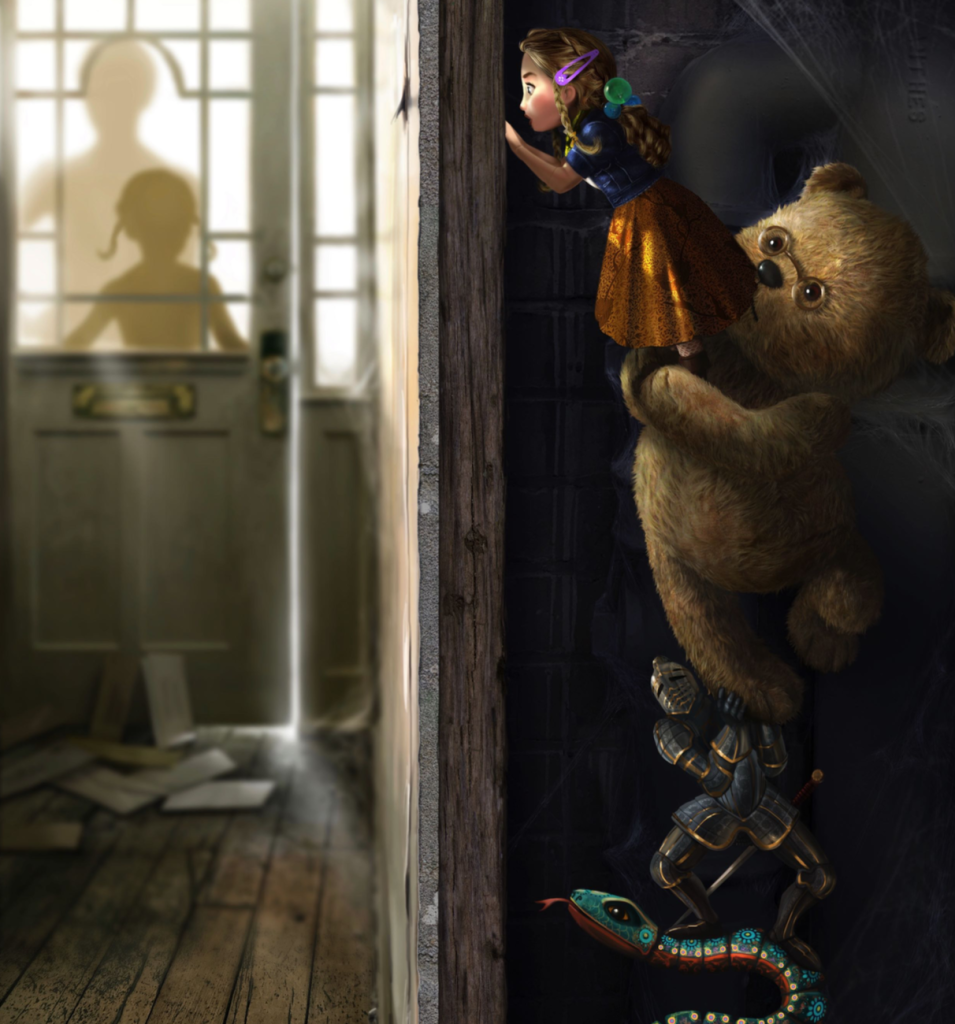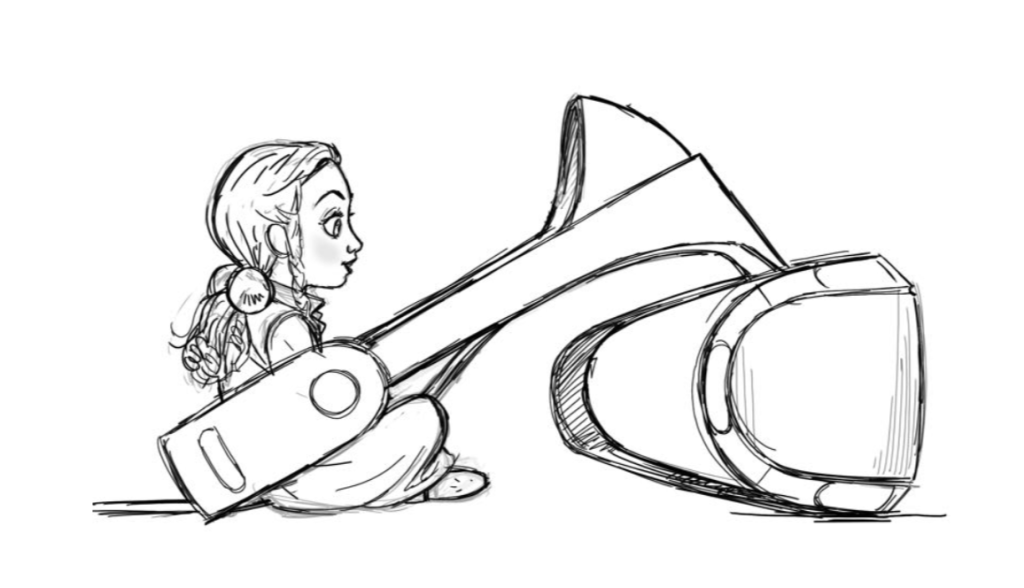Genre: Family/Drama/Fantasy/Animation
Premise: A group of old fashioned toys live comfortably in an abandoned house. However, their world is turned upside-down when a single mother and her daughter move in.
About: This is Alex Garland’s latest script. He wrote it for his wife, Paloma Baeza, to direct. This would be her first feature. She’s directed four short films. The most recent, Poles Apart, is an animated film about a polar bear who meets a grizzly bear for the first time. Helena Botham Carter voiced the polar bear.
Writer: Alex Garland
Details: 106 pages
Alex Garland is one of my favorite writers. I loved his last two films, Ex Machina and Annihilation. And if you want to go back a ways, I thought his novel, The Beach, was excellent. So I’ll read anything he writes. Even if it’s a children’s story! That is, of course, if this is a children’s story. The Toymaker’s Secret is a bizarre amalgam of genres – family, horror, fantasy, ghost story, comedy, drama – which works in its favor sometimes, and against it in others. I guess you might call this a “darker” version of Toy Story. Let’s check out the plot.
In East London, 1891, the Toymaker is on his deathbed. It’s here where he tells his apprentice that it’s time to pass on his secret – the secret of bringing toys to life. The apprentice is crawling out of his skin, he’s so excited. But first, he brings up a quibble.
“Master, one question.”
“Speak.”
“Why?”
“Why what?”
“Why wait for the deathbed? Wouldn’t it have made more sense to have told me this days ago?”
“I just said. It’s the way it’s always been. Since the days of Merlin.”
“Yes, but just given the importance of the secret, it seems so risky to wait until now.”
“Well, there’s a nice symmetry, isn’t there? At the moment of death. Passing the secret of life.”
“But it does make the timing unnecessarily critical.”
“Well quite. And given that time is fast running out — “
“— But what if something had happened to you? You could have been hit by a horse-drawn carriage.”
“That’s exactly why I look both ways before crossing the road.”
“Or been struck by lightning.”
“Could we address these questions after I’ve imparted the secret, rather than before?”
The Toymaker then brings the apprentice close and whispers the secret. Moments later, he’s dead. The apprentice jumps for joy. But not for the reasons we think. “You old fool. I see it all now. The greatest secret in the history of mankind. And for centuries, it has been wasted on children’s toys. But no longer. I shall use it for a very different purpose. I shall build an army of mighty automatons. All shall fall before me like dry wheat beneath the scythe! And I shall rule THE WORLD!”
The apprentice then runs outside, gets hit by a horse and carriage, gets struck by lightning, and dies.
Cut to Alfred, a teddy bear, Tulip, a doll, Celine, a snake, and Gawain, a knight, watching from the window. The toys realize they’re on their own now, and when a new family moves in, they’re forced to relocate to the walls, where they build a new home. They watch this family live for 80 years, until they are no more. Then they spend the next couple of decades living in the house alone.
That is until Catherine, a single mother, and Emily, her 9 year old daughter, move in. The toys are annoyed, but they’ve done this dance before. Then everything changes when a local contractor stops by to look at the house, and announces that the kitchen ceiling is going to need to be replaced. Since 90% of the toys’ secret home is above the kitchen, this forces them to uproot and move everything to a different section of the house.
When more contractors show up and suggest more changes, the toys realize that if they don’t think of something fast, their secret existence will be discovered. That’s when they come up with a plan to haunt their inhabitants. They do a pretty good job of this, with Tulip allowing herself to be “discovered,” only to pull an Exorcist, twisting her head around and making weird noises.
The only problem is that Emily is on to them. She finds her way into the secret world of the toys and demands to know what’s going on. They confess that they’re terrible “people” and tried to get them to leave. Emily forgives them, but both sides then encounter a new threat. It turns out that a toy the Toymaker never finished has also been living in the bowels of the house. And now he wants revenge for being left by the other toys…
While Rian Johnson may have forever turned the phrase “subverting expectations” into a screenwriting swear word, it’s still something you want to be doing when you’re writing. Subverting expectations doesn’t have to be the opposite of a big twist we were expecting, or the opposite of the climax we all wanted. It can include going against any expectation the reader has, even the smallest ones.
When I started The Toymaker’s Secret and he was on his deathbed and he prepares to tell his apprentice his big secret, I groaned. I’d seen this scene way too many times before. I got ready for a lonnnng read. But then the apprentice asks, “Why wait for the deathbed? Wouldn’t it have made more sense to have told me this days ago?” and I laughed. Not only did it subvert my expectations, but it was a dead-on observation that I’d always wondered myself. I went from skeptical to intrigued.
Then, after the apprentice learns the secret, he screams out how he’s going to make an army of automatons and take over the world, and I groaned again. “Oh,” I thought. “It’s going to be one of those movies.” Then the apprentice runs outside and gets killed. My expectations were subverted a SECOND time. Once more, I was intrigued. I should’ve known better. This wasn’t some weekend screenwriting warrior we were talking about. It was Alex Garland. Lesson learned.
The best thing about The Toymaker’s Secret is the characters, specifically the toys. I loved three of the four toys immediately. Each of them had such distinctive personalities. Alfred was the rule-follower and task-master. Tulip was the overly curious one. And Gawain was extremely serious about his duty. That’s one of the most important parts of the game, guys. You want the reader to know who your characters are. They should never be confused or wishy-washy about them. The lone wishy-washy character here is Celine, the snake. And she disappears into the background as a result. The same will happen to your characters unless they’re DISTINCT. We must know who they are and what they represent. Never forget that.
The worst thing about The Toymaker’s Secret is the plot. Remember that when you stick your characters in a single location for the majority of the story, you are limiting your narrative options. It’s not a coincidence that the word “movie” comes from the verb “move.” Movies like stories that MOVE SOMEWHERE. The exception is when there’s an outside force inflicting conflict on the characters in the location. Like David Fincher’s movie, Panic Room. Those characters are constantly threatened by an outside force.
The Toymaker’s Secret’s narrative is driven more by the impending collision between humans and toys. That’s really the only reason to keep watching. We’re curious how the two are going to meet, and what will happen when they do. This type of story engine can work. It’s just hard. And you can see Garland struggling with it throughout. The plot never truly gets going.
It all catches up to him in the third act, where we throw in the insane toy who’s been locked in the basement the whole time. The “late-arriving villain” is another toughie to make work because we don’t know him well. Therefore we don’t know what he wants. Therefore we’re not scared of him. Therefore we don’t give him a lot of weight. When you try and build your climax around a plot point like that, the results are predictable.
Which is too bad because I loved these toys. I thought Gawain, in particular, was hilarious. And Tulip was adorable. The scene where she sneaks into Emily’s room and uses a VR headset for the first time – rocking everything she knows about life – was wonderful. There’s a movie you can build around these characters, for sure. But this script tries to cover too many bases and, in the process, never discovers what kind of movie it wants to be. With that said, Garland keeps it readable, and I was never bored. So I’d say this is worth checking out.
[ ] What the hell did I just read?
[ ] wasn’t for me
[x] worth the read
[ ] impressive
[ ] genius
What I learned: One word can add so much to an image. When Tulip is stabbing the contractor’s toe through the wall with Gawain’s sword, Alfred comes flying in to stop her before she’s discovered. Here’s the description.
We are with TULIP, about to JAB SAM again —
— when suddenly she is RUGBY TACKLED by ALFRED.
Garland could’ve easily used “tackled” all by itself. It does the job. But by adding “RUGBY” before it, it creates a much more specific image.



